International Steel Prices

Domestic HRC Is Now Cheaper Than Imports
Written by David Schollaert
August 31, 2023
Domestic hot-rolled coil (HRC) is now cheaper than imported hot band as US tags have fallen further and at a faster clip than offshore product, according to SMU’s latest foreign vs. domestic price analysis.
The premium domestic HRC had held over imported material since mid-February has inverted, with offshore hot band now nearly 3% more expensive than US product.
Since February, US hot band had been significantly more expensive than imports, peaking in mid-April, and ballooning its premium to 23% on average. Imports are now more expensive, given that US tags have fallen by $165 per ton ($8.25 per cwt) since mid-July, while offshore product is down on average just $11 per ton over the same period.
HRC tags stateside, at an average of $725 per net ton this week, declined by $25 from the previous week, slipping to their lowest level since the first week of January. Domestic prices are now down $435 per ton since peaking this year at $1,160 per ton back in April.
Overseas prices have also been weakening since April, but declines have been less pronounced. That has caused the spread between import and domestic pricing to reverse.
Domestic hot band is now 2.6% cheaper than foreign material. It was 15% more expensive just about six weeks ago.
SMU uses the following calculation to identify the theoretical spread between foreign HRC prices (delivered to US ports) and domestic HRC prices (FOB domestic mills): Our analysis compares the SMU US HRC weekly index to the CRU HRC weekly indices for Germany, Italy, and east and southeast Asia ports. This is only a theoretical calculation because costs to import can vary greatly, influencing the true market spread.
In consideration of freight costs, handling, and trader margin, we add $90 per ton to all foreign prices to provide an approximate CIF US ports price to compare to the SMU domestic HRC price. Buyers should use our $90-per-ton figure as a benchmark and adjust up or down based on their own shipping and handling costs. If you import steel and want to share your thoughts on these costs, we welcome your insight at david@steelmarketupdate.com.
Asian Hot-Rolled Coil (East and Southeast Asian Ports)
As of Thursday, Aug. 31, the CRU Asian HRC price was $517 per ton, down $9 per ton from the previous week. Adding a 25% tariff and $90 per ton in estimated import costs, the delivered price of Asian HRC to the US is approximately $736 per ton. The latest SMU hot rolled average for domestic material is $725 per ton.
Now $11 per ton cheaper, US-produced HRC has theoretically lost its parity with steel imported from Asia.
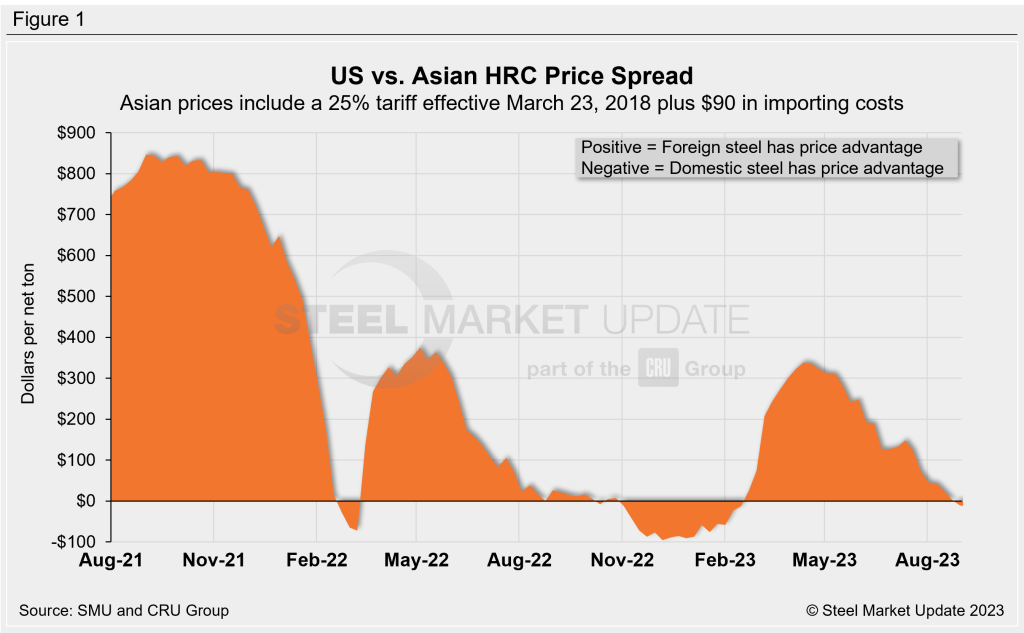
Italian Hot-Rolled Coil
Italian HRC prices moved down marginally week over week (WoW,) declining by just $1 per ton to $644 per ton this week. After adding import costs, the delivered price of Italian HRC is approximately $734 per ton.
Domestic HRC is now theoretically $9 per ton cheaper than imported Italian HRC. That is a far cry from late March, when US tags were $260 per ton more expensive than those of imported Italian hot band.
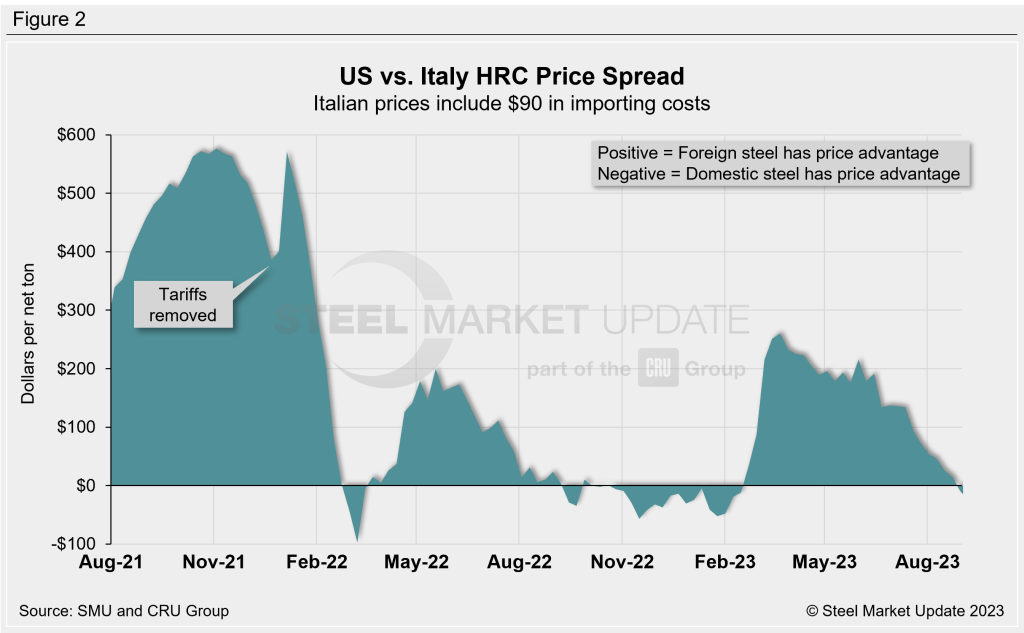
German Hot-Rolled Coil
CRU’s latest price for German HRC moved higher last week, up $20 per ton WoW to $671 per ton. After adding import costs, the delivered price of German HRC is roughly $761 per ton.
Domestic HRC is now theoretically $36 per ton cheaper than imported German HRC. That’s a $45-per-ton swing WoW, and a $269-per-ton change vs. late March when German hot band was 20% cheaper than US product.
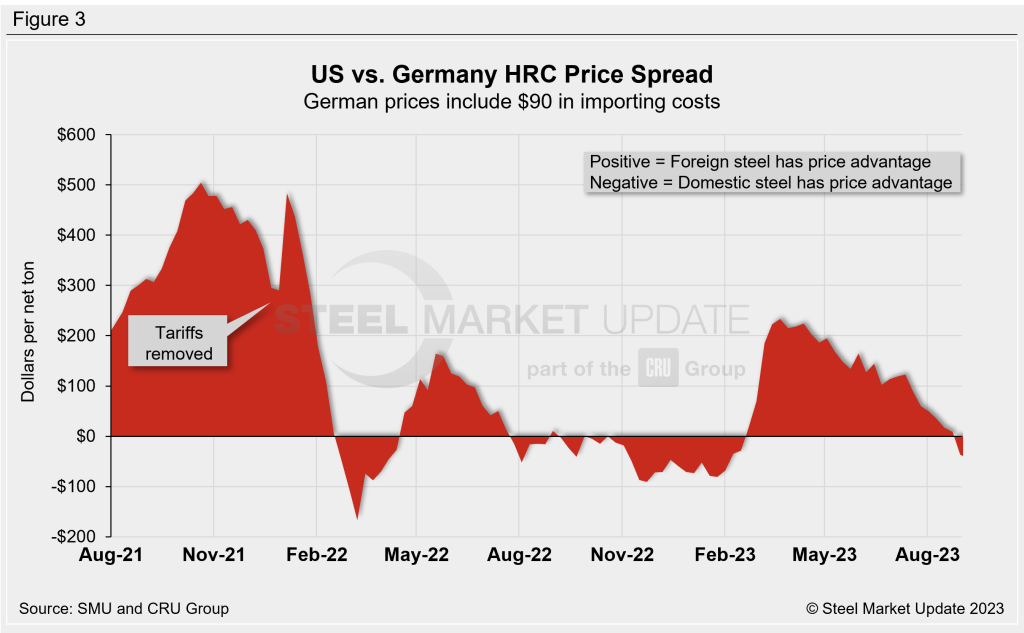
Figure 4 compares all four price indices. The chart on the right zooms in to highlight the difference in pricing from the second quarter of this year to the present.
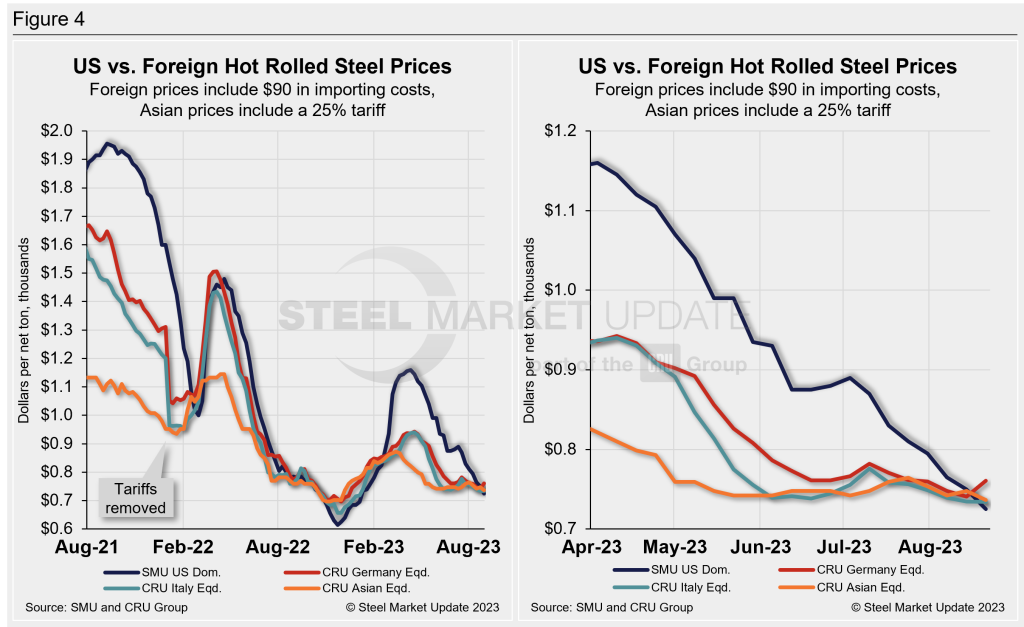
Notes: Freight is important in deciding whether to import foreign steel or buy from a domestic mill. Domestic prices are referenced as FOB the producing mill, while foreign prices are CIF the port (Houston, NOLA, Savannah, Los Angeles, Camden, etc.). Inland freight, from either a domestic mill or from the port, can dramatically impact the competitiveness of both domestic and foreign steel. It’s also important to factor in lead times. In most markets, domestic steel will deliver more quickly than foreign steel.
Effective Jan. 1, 2022, the traditional Section 232 tariff no longer applies to most imports from the European Union. It has been replaced by a tariff rate quota (TRQ). Therefore, the German and Italian price comparisons in this analysis no longer include a 25% tariff. SMU still includes the 25% Section 232 tariff on foreign prices from other countries. We do not include any antidumping (AD) or countervailing duties (CVD) in this analysis.

David Schollaert
Read more from David SchollaertLatest in International Steel Prices
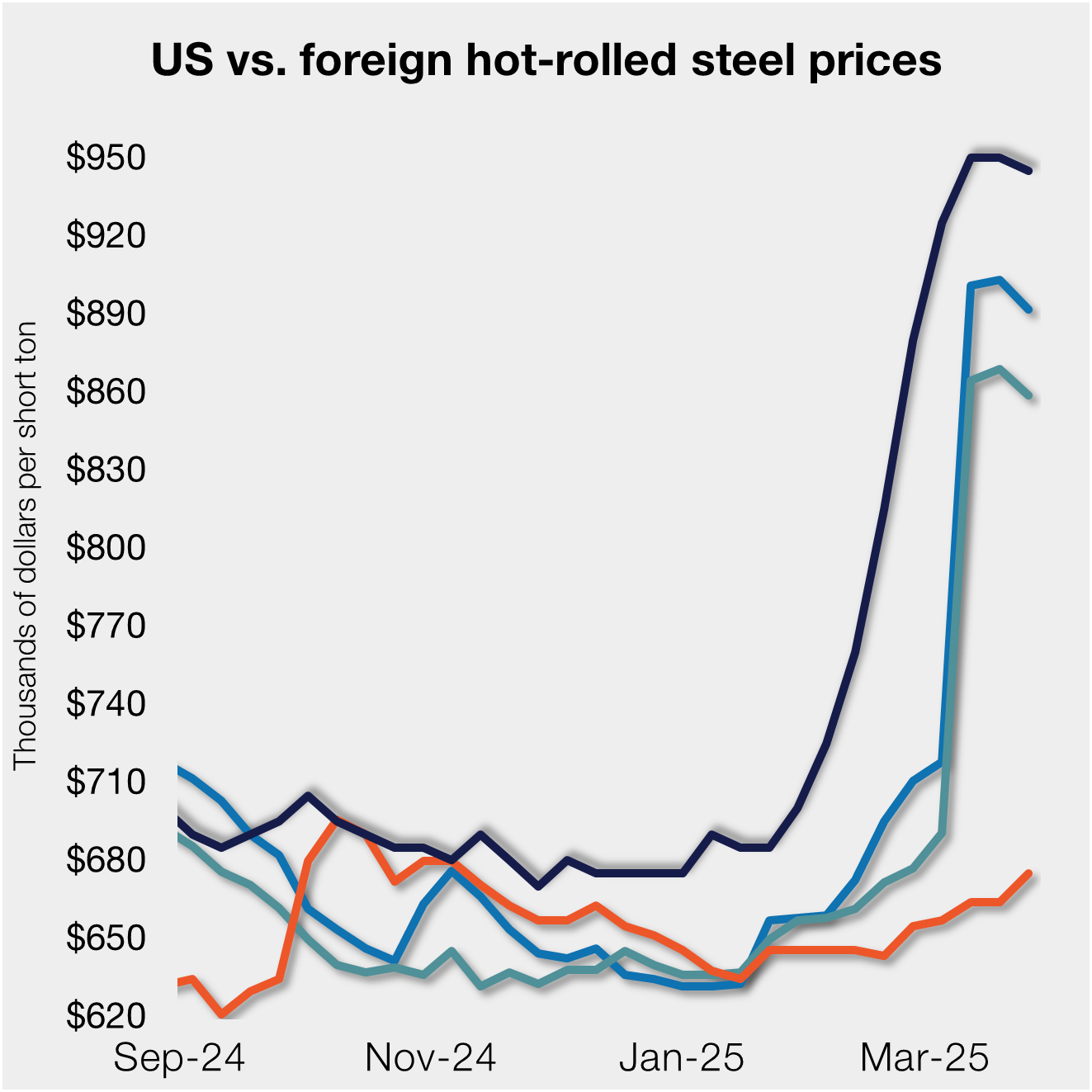
US and offshore HRC prices tick lower
The threat of tariffs over the past two months has been a springboard for US prices. But the Section 232 reinstatement on March 13 narrowed the domestic premium over imports on a landed basis.
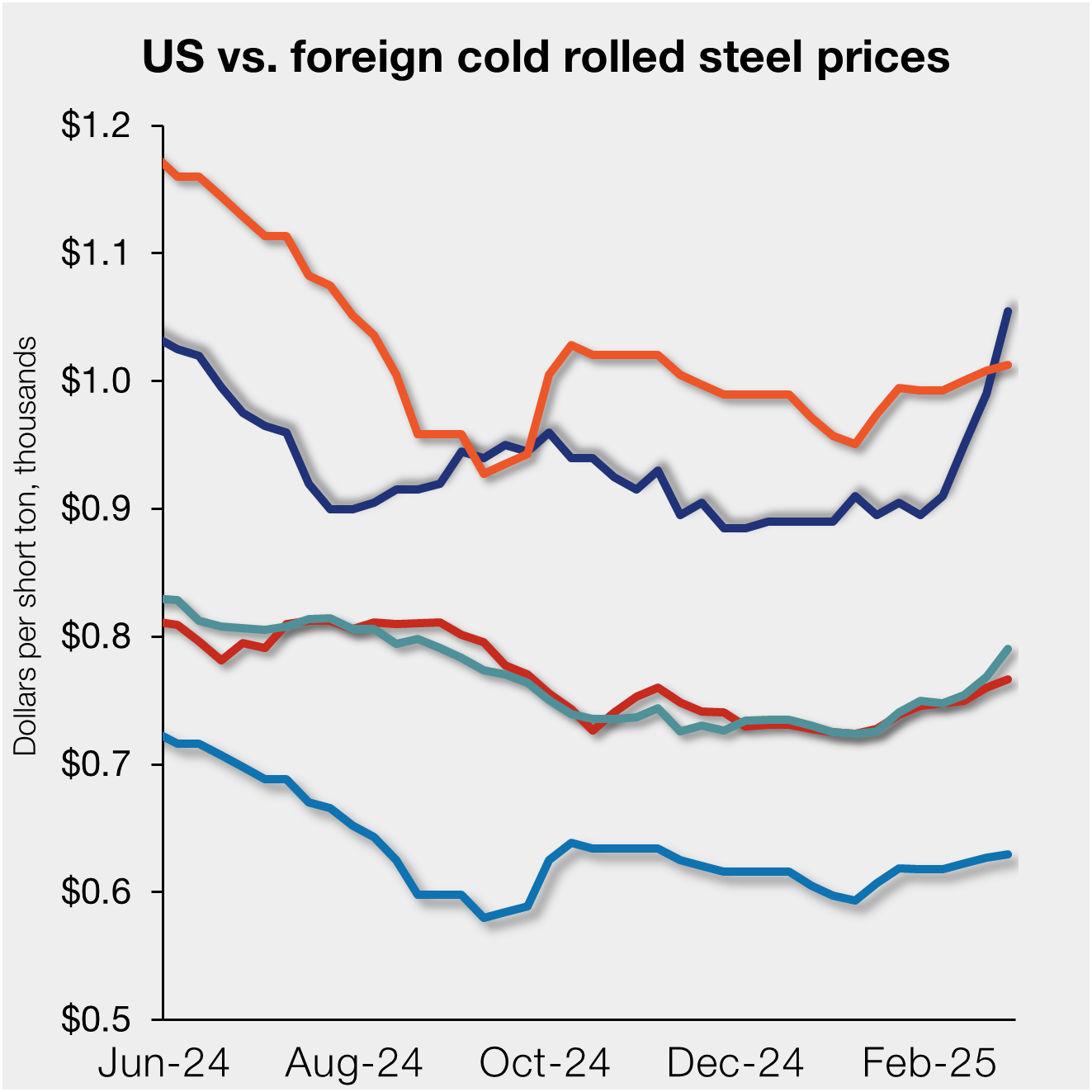
Domestic CRC prices surge ahead of imports
The price spread between stateside-produced CR and imports reached its widest margin in over a year.
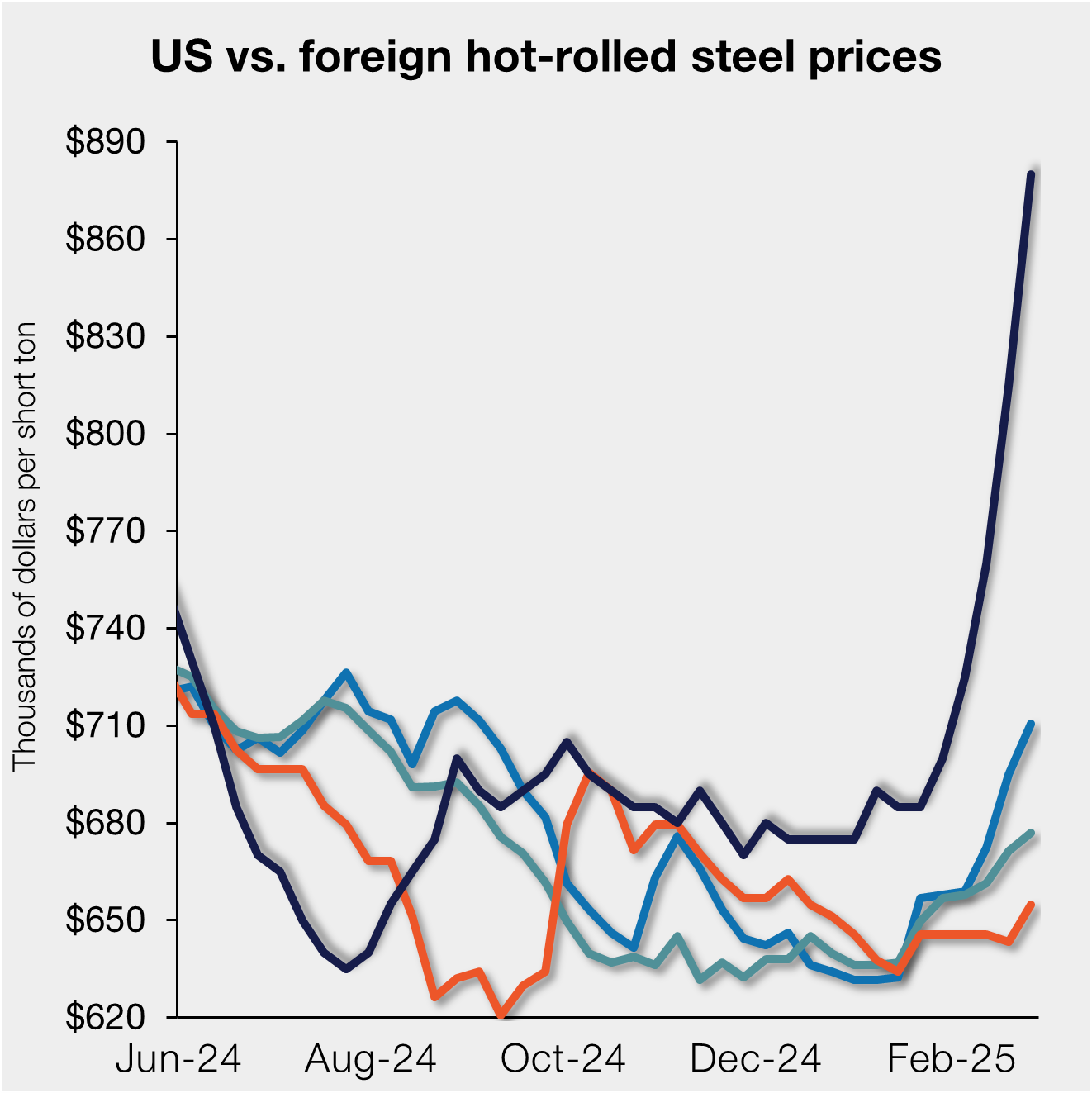
US HR prices rising faster than offshore tags
Hot-rolled (HR) coil prices continued to rally in the US this week, quickly outpacing price gains seen abroad. The result: US hot band prices have grown widely more expensive than imports on a landed basis. The premium US HR tags carry over HR prices abroad now stands at a 14-month high. SMU’s average domestic HR […]
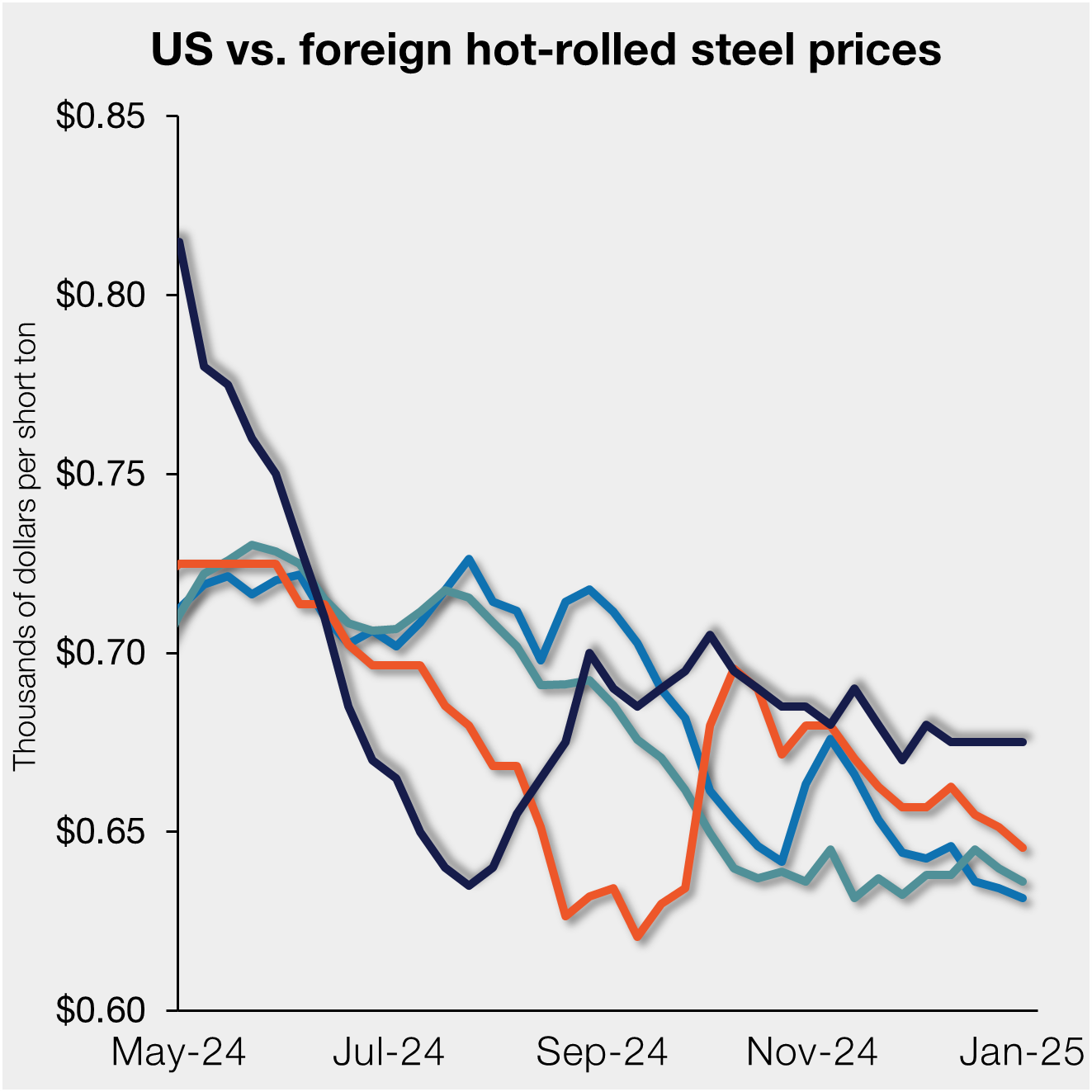
US HR price premium over imports widens
Hot-rolled (HR) coil prices were flat in the US this week, while tags in offshore markets were mostly down.
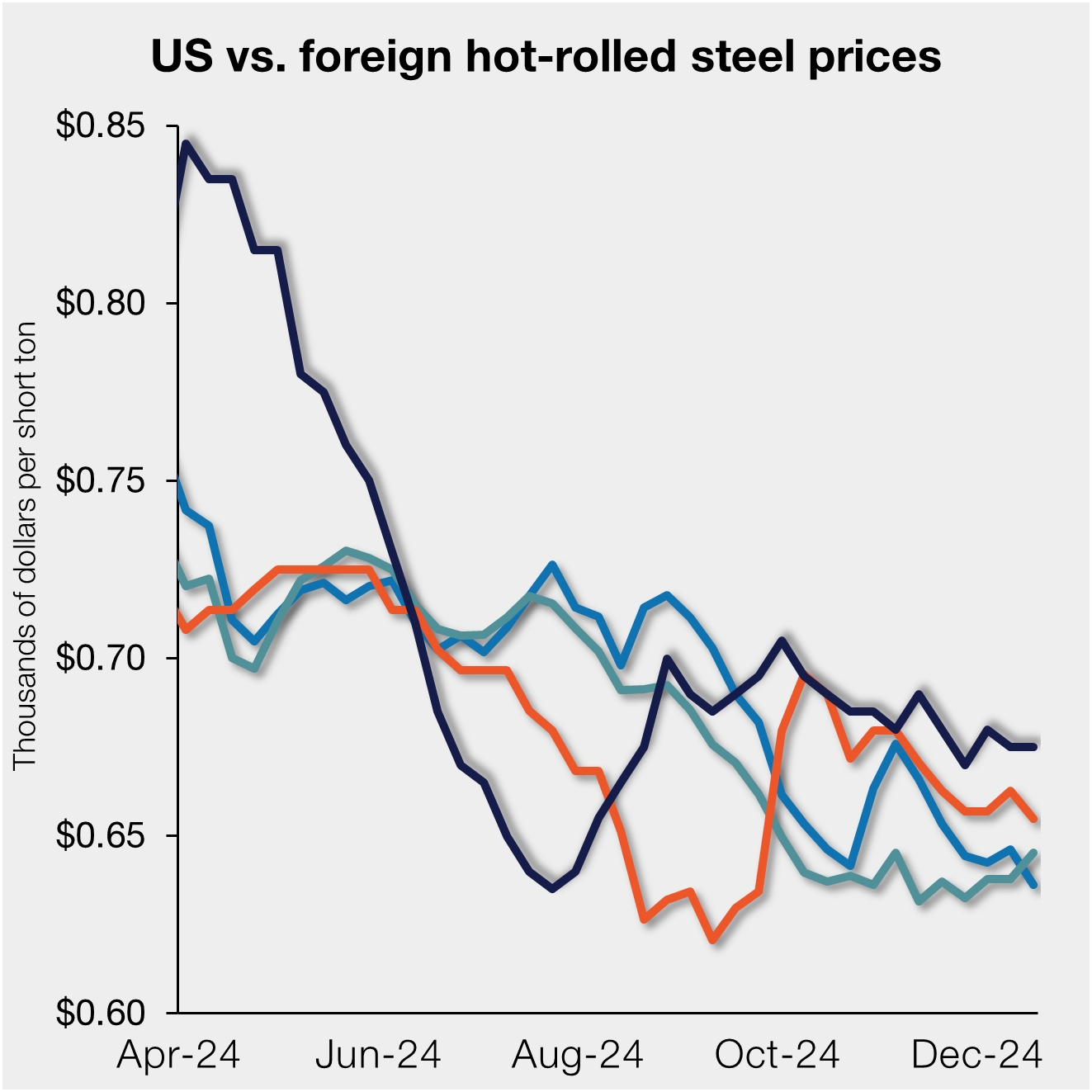
US HR price premium over imports edges up
The price premium between stateside hot band and landed imports widened slightly this week.
